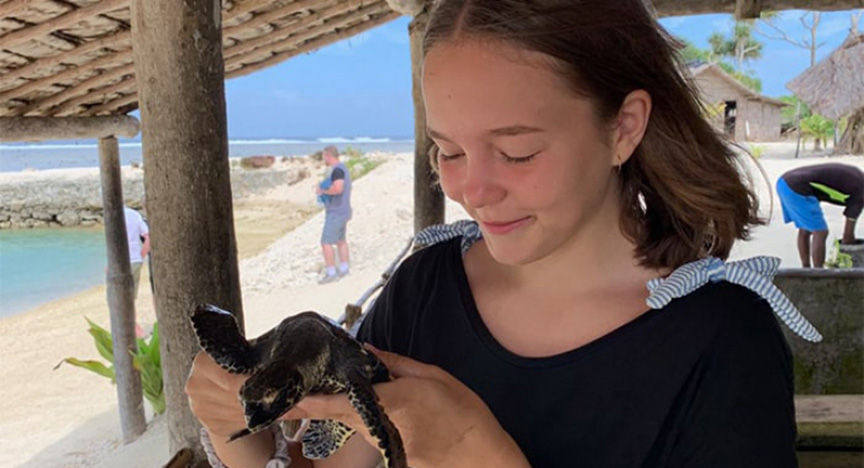
For most people, a case of appendicitis involves a bit of short-term pain that goes away once the condition is treated with antibiotics or the offending organ is surgically removed. But for 15-year-old Indianna, it marked the start of a long, isolating journey with persistent pain that frequently left her in tears and unable to enjoy life.
“It started with a pain in my right hip that just got worse, and then started to spread through my lower stomach. I had no appetite and could barely move because the pain was so bad. It just kept getting worse and worse, so my parents took me to hospital where I was diagnosed with appendicitis and scheduled for an appendectomy.”
The surgery went well but, unfortunately for Indianna, the pain came back two weeks later.
“I had been feeling really good and was supposed to go back to school the next day. But then I went to get up off the couch and was struck with a sharp pain in my stomach. It took my breath away and I couldn’t move – the pain was so bad, I started crying.
“For the next three months, I was in and out of emergency several times, and had test after test to find out what was wrong – but the tests couldn’t find a cause.”
“Those months were the hardest. I was in terrible pain and felt so isolated from friends and society.”
The turning point for Indianna came when doctors at the Queensland Children’s Hospital suspected persistent pain and referred her to the hospital’s Queensland Interdisciplinary Paediatric Persistent Pain Service.
What is persistent pain?
Persistent or chronic pain refers to pain that lasts for more than three months, with or without an organic cause and may not respond to usual medical treatment. Persistent pain is complex and can be caused by multiple factors including conditions like diabetes, arthritis, or fibromyalgia or can develop after trauma or after an injury has healed.
In Indianna’s case, the appendicitis had caused her body’s nervous system to become oversensitive in the affected area.
“Even if the signals received from the nerves in that area were not dangerous, my brain was interpreting the signal as unsafe and produced pain, which is your body’s ‘alert’ system to something being wrong.”
The road to recovery
The persistent pain team created a treatment plan to re-train my brain and body to understand that not all signals being received were dangerous. This included various activities and exercises, as well as physiotherapy to regain strength and fitness.
“It was a matter of achieving small goals, one at a time, until my body and brain recognised that it was safe and that I was OK,” Indianna said.
“These goals included simple things like getting through each period at school without needing to come home, to be able to play a set of volleyball or to get out of the house to go shopping or do a family activity.
“I also worked with a music therapist and if I had a flare up of pain, I would get a guitar and play a song we had practiced to redirect my thoughts and concentration,” she said.
“Another tool was to draw something during a flare-up to redirect my brain. Cooking also helped – I would sit on a kitchen stool and mix the ingredients then put them in the oven, until I was eventually able to stand and cook.”
After a month under the treatment plan, Indianna started to notice an improvement and continued to work with the persistent pain team for about four months.
“The process was slow and hard but giving it a go was the best decision I ever made. I wouldn’t be where I am today if it wasn’t for that team – I am forever thankful that I no longer experience excruciating pain.”
Indianna has now be pain-free for almost a year and is back to her old self. For other young people dealing with persistent pain, she has the following tips:
- “You may not be believed by many when you try to describe what chronic pain is, especially when tests show you are healthy. Know that you are not making it up and that it is there.”
- “It may be one of the hardest things you can go through but don’t give up, things will get better.”
- “Don’t push yourself to do things too early, you do not want to make it worse and make the recovery longer. Follow your treating team’s plan – it does work – slowly but surely.”
- “Yes it hurts, but try to distract yourself with something you love doing.”
- “Don’t push people away, especially your parents/carers – they fight this pain right alongside you and they are your biggest support. They are there for you and are choosing to be, allow them to care because you will need that support even if you don’t want it right now.”
Useful links
Queensland Interdisciplinary Paediatric Persistent Pain Service